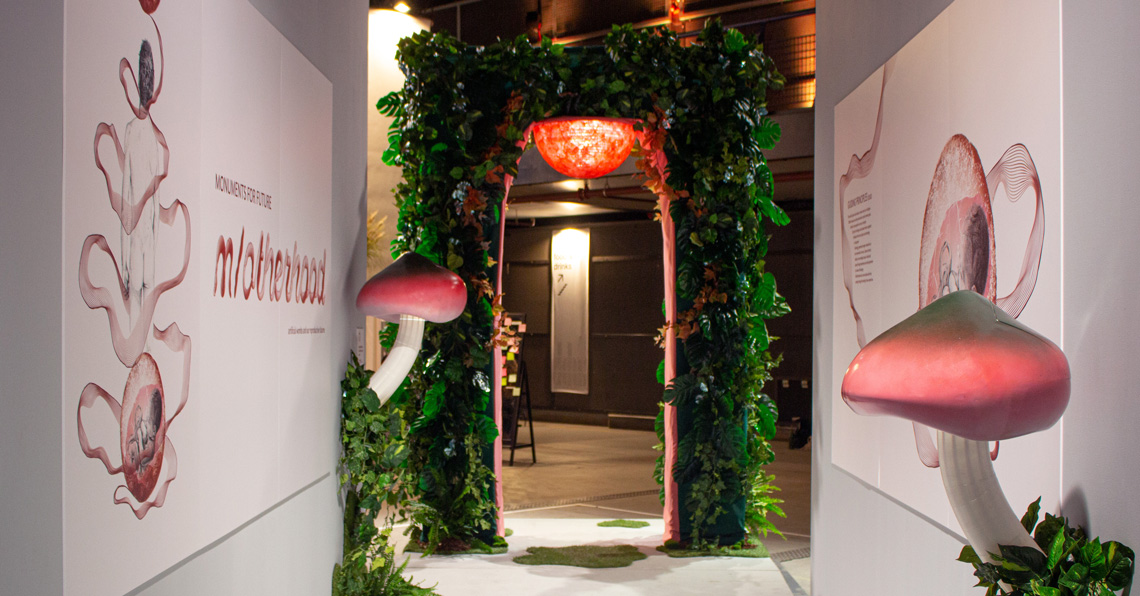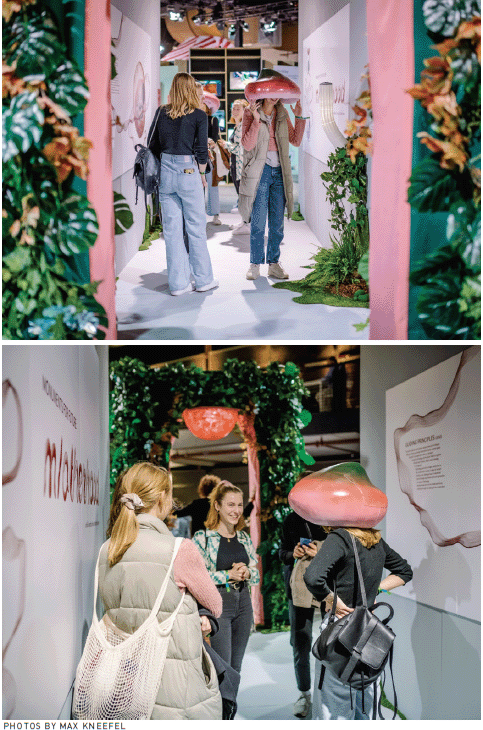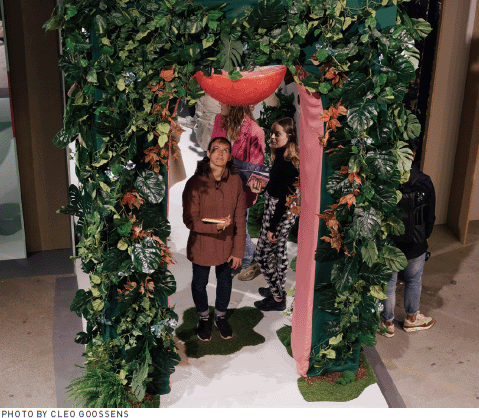The Monument for Future M/Otherhood
Issue: XXXI.4 July - August 2024Page: 6
Digital Citation
Authors:
Cristina Zaga, Lisa Mandemaker
To engage the general public about reproductive technologies, we use interactive technologies to create spaces of more-than-human transdisciplinary co-speculation. In the Monument for Future M/Otherhood, diverse perspectives are brought together to create alternative sociotechnical imaginaries of reproduction. The intent is to spark debate about medical technology and the possibility for gestation outside the womb. A speculative artificial womb is designed as a boundary object focused on ideas of motherhood and kinship that go beyond anthropocentric stereotypes. We use the term m/otherhood with a slash to indicate the phenomena of motherhood from a plural perspective, inviting and embracing a multitude of other identities that may experience what we call motherhood.
We designed a circular womb shell made of a natural skin of leaves embedded in an arch, placed in a fictional ecosystem of plants, flowers, and fungi, a cohabitation space of humans and nonhumans. To embody the facets of memory and past gestation experiences in the womb, we connected the concept to how trees store data of their life cycle in concentric rings, focusing on the entanglements with data. We developed 18 interactive data rings meant to contain all of a person's dreams before they were born, data on how they moved around, the sounds they heard, and the sensations of being formed. The data rings are LEDs that can light up individually through motion sensors. The rings represent a future way of safekeeping and interacting with gestational data, a warm entanglement with an artificial womb.
 | The Monument for Future M/Otherhood at Dutch Design Week 2022. |
People interact with the womb through an audio mushroom. In this space, 3D-printed mushrooms are narration devices to guide visitors. The mushrooms consist of a cap, which is a head-mounted device containing a microcontroller with audio output, and a stem connected to a wall panel with LEDs. They are designed to impede the vision of visitors so that they focus entirely on sounds. The arch has a speaker hidden in the leaves that plays evocative classical music, triggered by a motion sensor when a visitor approaches.
The rings represent a future way of safekeeping and interacting with gestational data.
The speculative artificial womb "gestates" one baby per year for 18 years. After 18 years, it will retire to become a locus of visitation and connection to gestation experiences, memories, and sensations. The installation is speculatively set 18 years from now. Visitors experience the retired womb as a monument connected to family trees and focused on care for future generations.
 | A close-up of the data rings. |
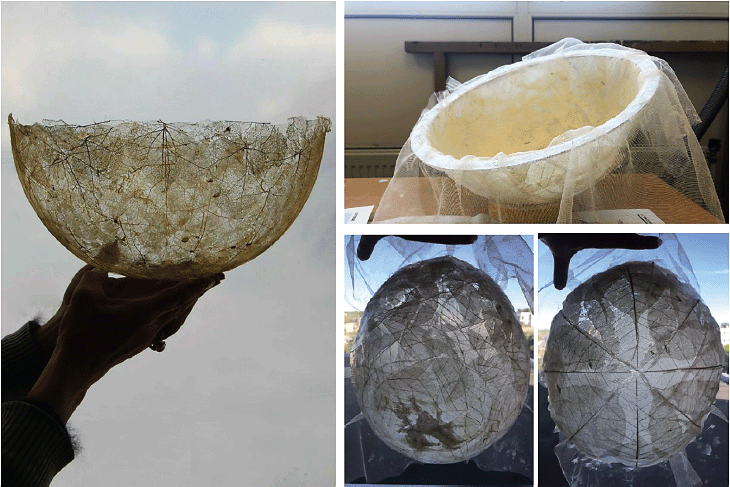 | Prototyping the artificial womb shell. We designed and prototyped a circular womb shell made of a natural skin of leaves that embrace a semitransparent cove. |
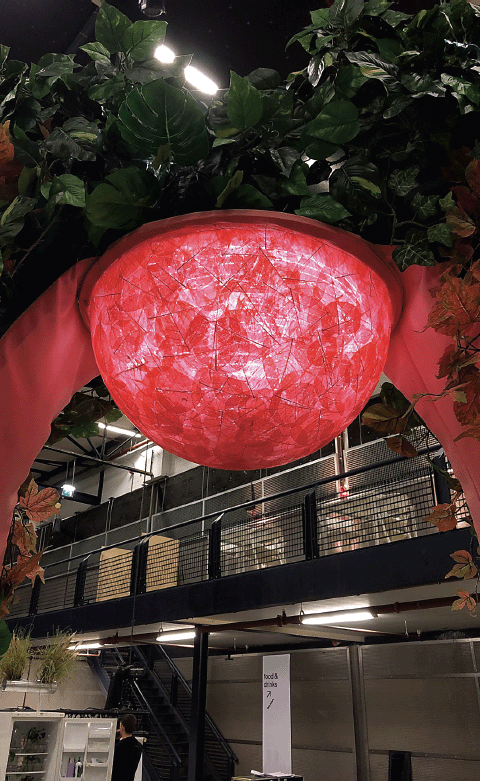 | Final artificial womb with data rings. |
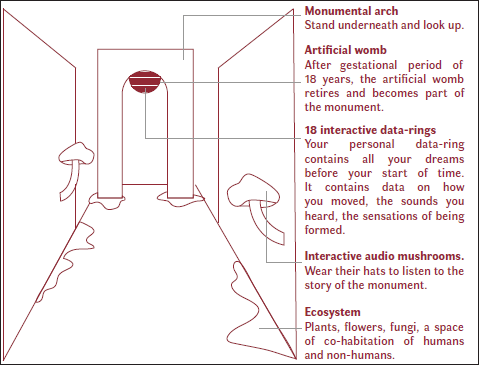 | Sketch of the envisioned experience of the Monument for Future M/Otherhood. |
DesignLab University of Twente, Ethics of Socially Disruptive Technologies (ESDiT), Margot Gonzàlez Woge, Lily Frank, Julia Hermann, Naomi Jacobs, and Llona Kavege all contributed to this project.
Cristina Zaga is an assistant professor at the Human-Centred Design group at the University of Twente. Her research focuses on transdisciplinary and relational design methods for just futures of work and care. [email protected]
Lisa Mandemaker is a speculative designer with a strategic, contextually aware, and critical approach to research and design. [email protected]
Copyright held by authors
The Digital Library is published by the Association for Computing Machinery. Copyright © 2024 ACM, Inc.
